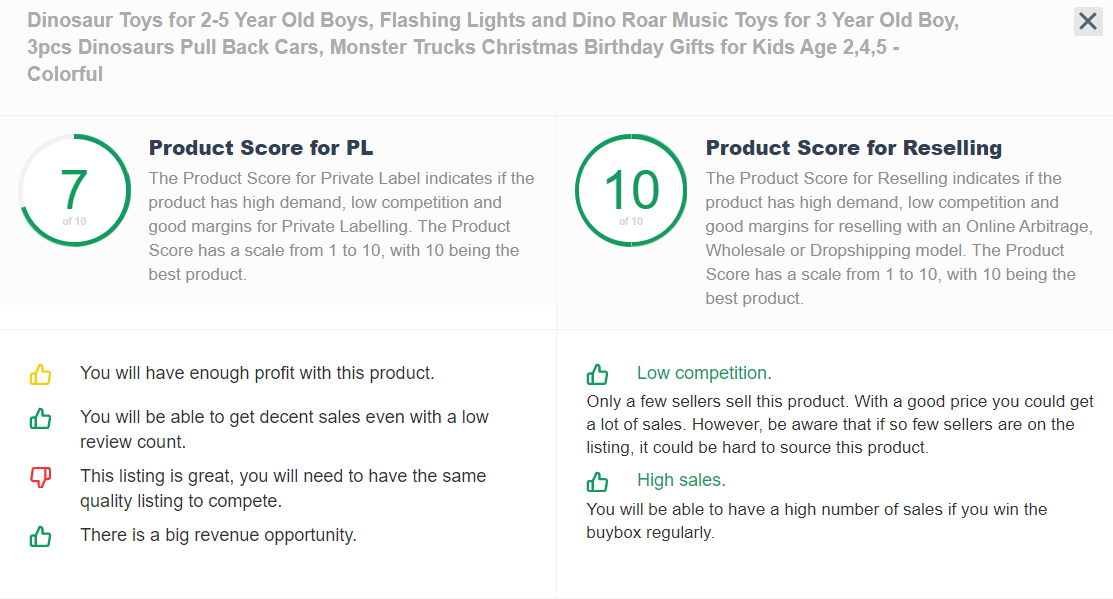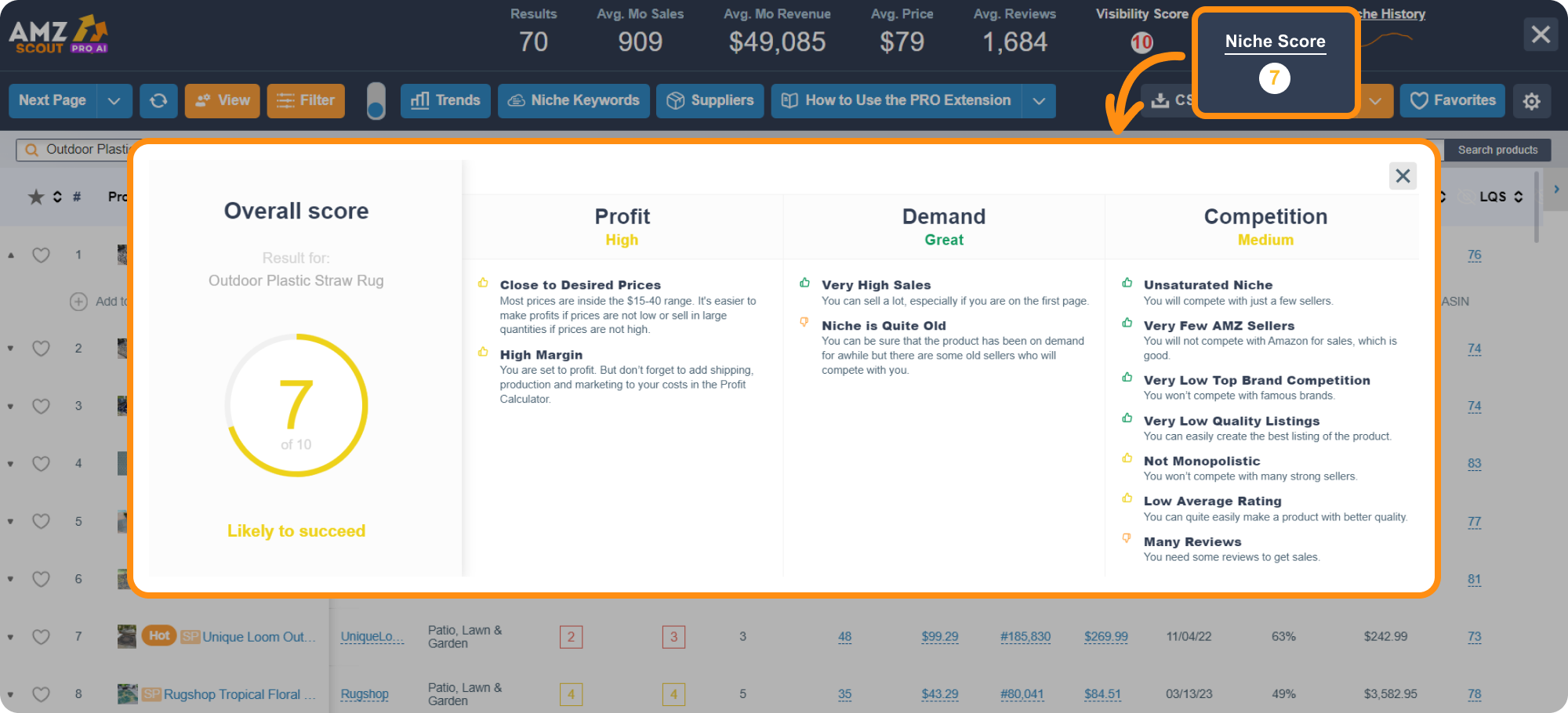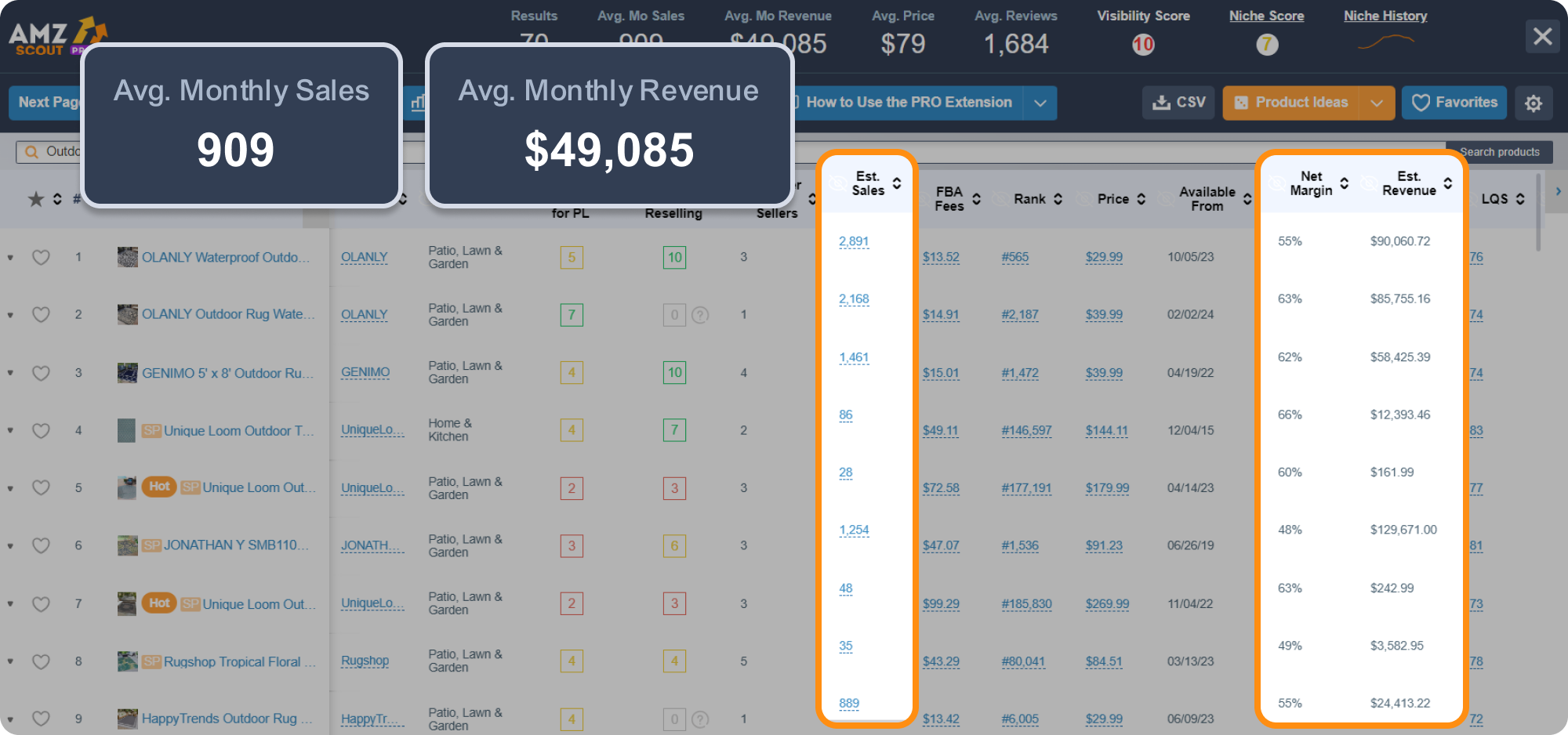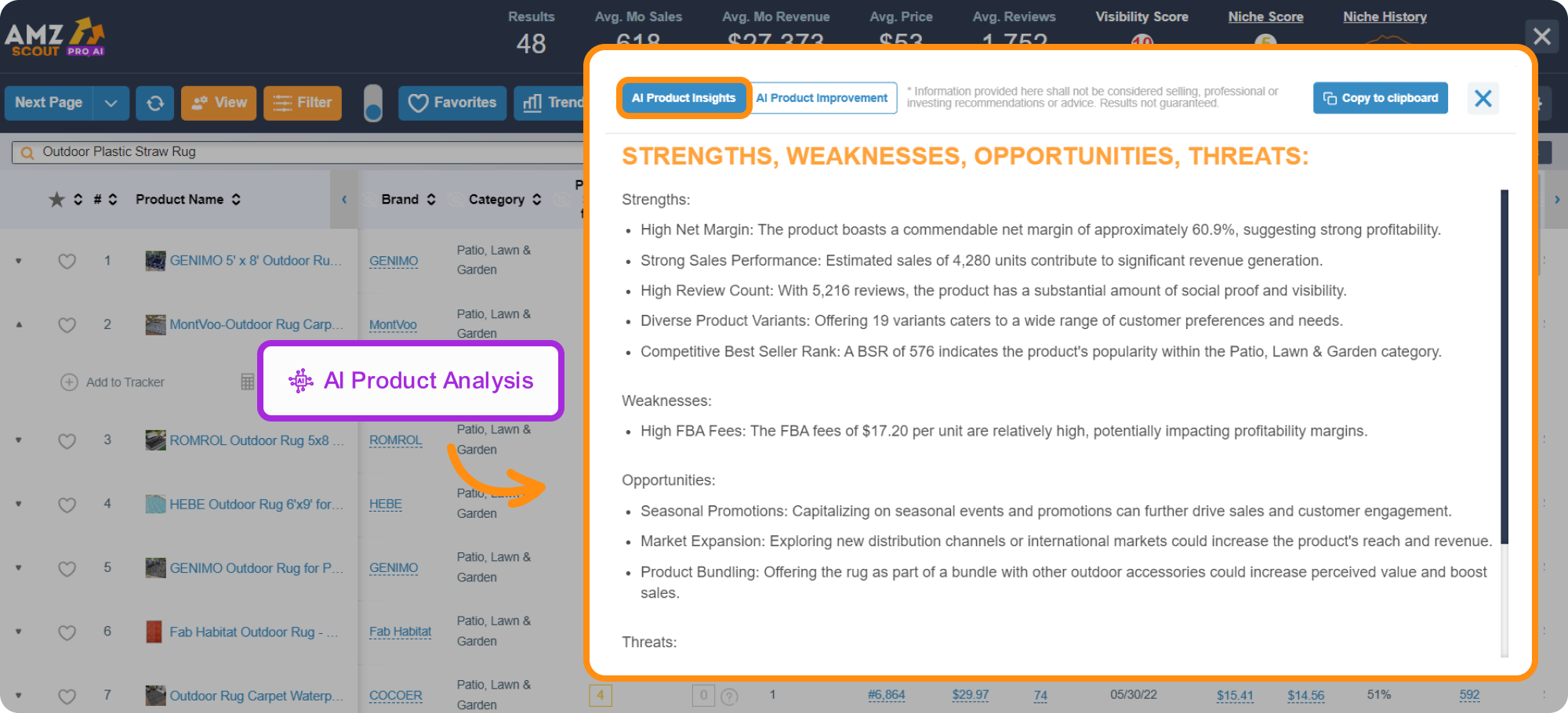
How to Conduct Amazon Product Research in 2025: A Step-by-Step Guide for Beginners
One of the keys to success as an Amazon seller is filling your store with standout items. But being able to identify winning products requires more than just intuition—it demands thorough product research. This approach not only protects you from bad investments, but also ensures sustained business growth and increased revenue.
In this article, we’ll dive into effective methods for Amazon product research and share valuable tips to help you find the best products for your store.
Table of contents
What is Amazon Product Research?
Amazon product research is the process of analyzing and validating the profitability potential for a particular item. The purpose of this process is for the researcher to gain an accurate idea of how successful selling a particular item can be, before you begin selling it.
Product analysis involves evaluating multiple factors, each of which will vary depending on your specific needs. Thorough research allows you to answer crucial questions, such as:
Will there be enough of a profit to justify my investment in this product?
Will this product enable me to stand out on Amazon?
Is the product scalable for future growth?
Is the market for this product likely to grow or shrink in the future?
How satisfied are customers likely to be with this product?
Selecting a product by calculating its potential return helps you make informed decisions about sourcing and marketing, avoiding unnecessary expenses. Choosing items that sell quickly also reduces storage costs and minimizes inventory holding time. Additionally, a well-researched product is more likely to drive business growth and boost profit opportunities.
These are just a few examples of the key considerations when starting the product hunting process. By conducting thorough product analysis, you can set the foundation for a successful, long-term business. Now, let’s dive into product research strategies.
Amazon Product Research Strategies
There are various methods for conducting product research, each with its own unique approach and benefits. Here’s a brief overview of the top five strategies:
Method 1: Checking the Amazon Best Seller List
The Amazon Best Seller list showcases products with the highest sales, giving you a snapshot of what’s currently popular among customers. This list is updated hourly and provides real-time information on top performers and emerging trends. It's also easy to navigate, as you can explore best sellers by category and subcategory.
While this free tool provides a helpful way to gauge demand, it lacks deeper insights needed for comprehensive product research, such as competition level, profitability, and alignment with your business model, and therefore does not provide sufficient information needed to be certain of your product choice or its potential success for your store.
Method 2: Exploring Social Media Trends
Social media platforms are an invaluable resource that reflect customer interests and trends. By examining what bloggers and influencers in your niche are promoting, you can gauge what is currently popular. Monitoring comments and reactions from followers helps assess the potential success of these products. Additionally, viral products on platforms like TikTok often become Amazon bestsellers, presenting new opportunities for finding trending items.
Keep in mind that this method can also be time-consuming and unreliable, as social media trends are highly unpredictable and change rapidly. Additionally, you won’t have access to sales data or other essential statistics needed for making informed business decisions.
Method 3: Analyzing Reviews and Amazon Search Bar
Another way to gauge customer interests is by exploring autosuggestions in the Amazon search bar that reveal popular searches. Checking reviews of similar products can also uncover gaps and opportunities. However, this approach can be time-consuming, subjective, and may miss emerging trends or shifts in demand.
Method 4: Using Product Research Tools
The next way to perform Amazon product research is to use software designed to help you streamline the research process. It’s important to find a tool that offers accurate data and strikes the right balance, offering essential features without being overloaded with unnecessary functions.
AMZScout is a popular choice among Amazon sellers for its comprehensive functionality, and helps sellers quickly identify trending products and assess their viability for their stores by providing precise data on profitability, competition, demand, and more. This automation saves you significant time and effort. Now, let’s explore how to do product research for Amazon.
How to Conduct Amazon Product Research - Step-by-Step
Identifying successful products to sell on Amazon involves analyzing various parameters, such as sales volume and the number of competitors. Let’s explore how Amazon product researchers can find a successful product using the AMZScout toolkit, using an example of a store that offers pet supplies.
Step 1: Generate Product Ideas
When starting out, it's essential to gather ideas about what's trending in the market, including new product releases and other relevant insights. Conducting this level of trend analysis is much easier when you use the AMZScout Product Database, which offers data on over 600 million products.
Here’s how to generate successful product ideas fast:
1. Go to the AMZScout Product Database. Start your free trial by entering your email address.
2. Define your key criteria. Choose the category (such as Pet Supplies), and include specific keywords, if needed (like “Labrador”) to narrow down your search. The database offers 16 filters to help you refine your search based on your goals. Consider using these universal filters:
Estimated Sales: For stable demand and easier inventory management, aim for products that sell over 200 units/month.
Weight: Limit to under 3 lbs to save on shipping costs.
Seller Type: Exclude Amazon from competitors.
Price: Focus on products priced over $15 to secure a substantial profit.
3. Find products with low competition. Click on filters and apply those tailored to your business model, as criteria vary widely. For details on business model characteristics and budgeting, click here.
Reselling (This is when you buy products at a lower price and resell them on Amazon)
Number of Sellers: 2-15, to avoid private label products or intense competition with other sellers.
Product Rating: Aim for four or higher to ensure product quality.
Private Label (Creating your own brand and selling custom products on Amazon)
Number of Sellers: For private label sellers, the number of sellers on the listing is irrelevant since you are the sole vendor for that product. However, it is important to avoid competition with strong brands.
Product Rating: Less than four to identify areas for improvement.
Reviews: Stay under 150-500 to avoid competition with established merchants.
4. Check New and Trending Products. Use the New Products or Trending Products filter to discover newly released items or those with a recent surge in sales.
5. Review your results. Click “Find Products” to view all items that meet your criteria. Create a list based on the products that interest you most. You can sort the results by criteria like Estimated Revenue or other relevant parameters to prioritize products with the highest results first.
Then it's crucial to evaluate each result individually. For example, let’s examine the “dog bark collar,” which is particularly lightweight (under 0.5 lbs) and has estimated sales of over 14,000 pieces/month. Let’s check how to assess whether this product could be a good fit for your store.
Step 2: Evaluate the Niche on Amazon
The next step in your product research is to review the niche for your target product. By analyzing the overall sales history within the niche, you can gain valuable insights into market dynamics and identify emerging trends. While an individual product’s success can be influenced by factors like strong branding, extensive advertising, or even pure luck, evaluating its niche is crucial for determining its true profitability.
Here’s how to conduct a niche analysis:
1. Install the AMZScout PRO AI Extension.
2. Search for the product on Amazon. Go to Amazon and enter a product name you found using the Product Database, such as “dog bark collar”.
3. Open the AMZScout PRO AI Extension. Once you’re on the product page, click the AMZScout PRO AI Extension icon in the upper right-hand corner of your browser to review the data.
4. Evaluate niche performance. Focus on two key parameters located in the top-right corner of the extension page:
Niche Score: A score greater than 6 indicates high demand, low competition, and strong profit potential. The extension also provides a text explanation for why the niche received that score, offering valuable insights.
For instance, the dog bark collar niche might have a score of 6, but it may require a significant number of reviews and high sales volume to achieve substantial profits.
Niche History: Review the visual graph that displays sales trends over the past year. A stable or growing trend suggests good sales potential, while niches with declining sales or those that are overly competitive may be less attractive.
5. Assess the competition within the niche.
New competitors: Click the Available from column in the PRO AI Extension to view the newest products first. Check the number of new sellers and their performance by reviewing the Estimated Revenue column.
Number of reviews: In the PRO AI Extension, check the Average Reviews in the niche within the header of the built-in window. Then, click the Number of Reviews column to see sellers with the most reviews. If not many sellers have numerous reviews while most have few, competition is manageable. If many sellers have high review counts, competition is stronger overall.
Number of competitors: Search the term on Amazon to see how many results appear. A higher number of results (over 1,000) indicates stronger competition.
Listing performance: Click the Estimated Revenue column in the PRO AI Extension to prioritize search results by highest revenue and check the LQS (Listing Quality Score). This score indicates how good the listing is. If the score is under 70, you can potentially outperform them by optimizing your listing. By clicking on LQS, you'll receive suggestions on improvements (e.g., more bullet points, additional images, adding A+ content).
This helps you avoid investing in niches that are on a downward trend or are too difficult to penetrate.
Step 3: Analyze Product Viability within the Niche
If the niche appears promising, you should verify the profitability of individual items and ensure they align with your business model. Here’s how to do this:
1. Select products to analyze. Sort the results by clicking on the column name corresponding to the relevant criteria (such as "Estimated Sales") to view the products with the highest sales first.
2. Assess the product’s performance. Click under the product you're interested in to review its Product History. Check the sales data to ensure a steady trend without sudden drops, which indicates consistent demand and sales.
3. Check product profitability. Use the Profit Calculator to determine if the profit margin exceeds 20% after all costs are deducted. Otherwise, the item may not be profitable enough.
4. Determine if you can develop a selling strategy for this product. Click “AI Product Analysis” under the item, and select “AI Product Insights” from the upper-left corner of the window. Review the analysis to assess whether you can address any hidden drawbacks, and if the opportunities are worth pursuing for your business.
Optional: Private label sellers can explore ways to differentiate their product by checking the AI Product Improvement (a part of AI Product Analysis located under the product). This tool provides customized product improvement suggestions and explains how each change can positively impact your business.
5. Save any products that have passed your evaluation. Click the heart icon next to the product name to add it to your favorites.
Optional: If you’re choosing from several products, consider comparing them to choose the one that best aligns with your business. Click “Favorites” in the top-left section of the screen and select “Product Comparison”. The tool will compare products, highlighting the strengths of each, making it easy to identify the one with the best performance.
By evaluating a product's opportunities and threats, you can make an informed decision about whether it’s worth the investment, reducing the risk of purchasing a product that won’t generate revenue.
Step 4: Ensure Compliance with Amazon Rules
Resellers must ensure that their products comply with Amazon’s rules and guidelines. This means adhering to category restrictions, obtaining necessary permissions, and respecting any trademark or brand regulations that might apply to the products they intend to sell.
Here’s how to conduct a more thorough investigation:
1. Install the Online Arbitrage, Wholesale, and Dropshipping Extension.
2. Check the product’s details. Open the Amazon page of the product you found using the PRO AI Extension. Review key Parameters:
Category: Check the color-coded indicator to see if the category is gated or ungated. For example, if the dog bark collar is ungated, you can start selling it immediately without additional permissions.
HAZMAT: Verify whether the product contains hazardous materials that require special certification. For instance, the dog bark collar does not contain hazardous materials and can be sold without any extra requirements.
Buy Box History: Analyze the Buy Box win history over different time periods to refine your pricing strategy and improve your chances of winning the Buy Box.
Trademark Check: Click to see if the brand name is registered as a trademark. If it is, you may need reseller permission from the brand owner to sell the product.
By utilizing the best product research tools for Amazon, you can effectively find products to sell, assess their profitability, and gain valuable insights for crafting a successful selling strategy. This approach enhances your chances of making sales and provides a solid foundation for your business model.
Outsource Your Product Research to Sellerhook Experts
If you lack the time or prefer not to conduct research on your own, you can outsource your product selection to Sellerhook experts. The team will find potentially profitable products tailored to your business needs, delivering one or five high-potential product ideas within 8-10 business days. To learn more about this service and boost your chances of a successful Amazon business, click here.
You don’t necessarily need to rely on just one method for product research. In fact, combining several approaches can enhance your efficiency and provide a broader perspective that enables you to make informed decisions.
Conclusion
When conducting product research, it's essential to consider multiple factors that impact your product selection. To get the most accurate data and save time, consider using tools like AMZScout to streamline the process or outsourcing product selection to professionals like Sellerhook. This approach increases your chances of selling in-demand products, driving a profit, and achieving success.





















